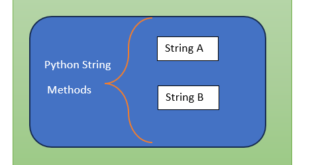The number data type in Python is used to store numerical values, including integers and floating-point numbers. It is a fundamental data type that is used in a wide range of applications, from simple calculations to complex scientific computations.
Integers are whole numbers with no decimal point, such as 1, 2, 3, 4, etc. In Python, integers can be represented using the int data type. The int data type supports basic arithmetic operations like addition, subtraction, multiplication, and division.
Floating-point numbers, on the other hand, are decimal numbers such as 1.5, 2.75, 3.14159, etc. In Python, floating-point numbers can be represented using the float data type. The float data type supports not only basic arithmetic operations, but also more advanced mathematical operations like trigonometric functions, logarithms, and exponents.
Python also has a third data type for numbers called complex numbers. Complex numbers have a real part and an imaginary part, and are represented using the complex data type. They are used in mathematical applications such as signal processing, quantum mechanics, and engineering.
intfloatcomplex
Examples:
x = 3 # int type type
y = 3.14 # float type
z = 2j # complex
x = 3
y = 3.14
z = 2j
print("type of x is ",type(x))
print("type of y is ",type(y))
print("type of z is ",type(z))
The output of the above is :
type of x is <class 'int'>
type of y is <class 'float'>
type of z is <class 'complex'>When working with numbers in Python, it is important to be aware of the limitations of the number data type. For example, integers have a finite range, and attempting to perform calculations outside this range can result in errors. Similarly, floating-point numbers have limited precision, and may not be able to represent certain decimal values exactly.
To overcome these limitations, Python provides various built-in functions and modules that can be used to perform complex mathematical operations. The math module, for example, provides functions like sqrt(), sin(), cos(), and exp(), which can be used to perform advanced mathematical calculations.
In addition to the built-in functions and modules, Python also has a rich ecosystem of third-party libraries for scientific computing, such as NumPy, SciPy, and pandas. These libraries provide additional functionality for numerical computations, including statistical analysis, linear algebra, and data visualization.
 IT2EDU Empowering Education Through Technology
IT2EDU Empowering Education Through Technology


